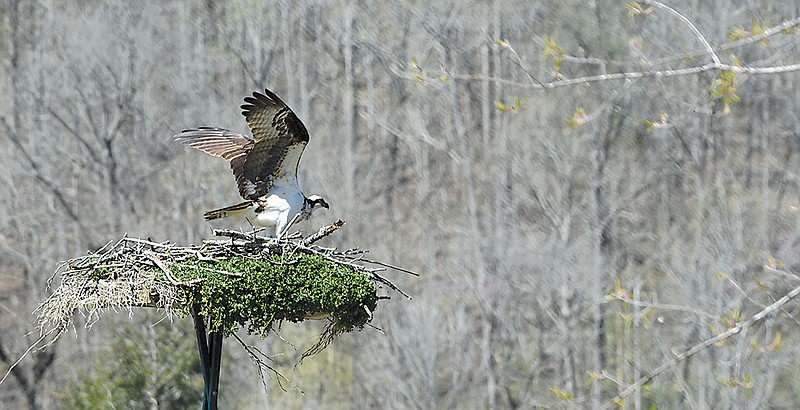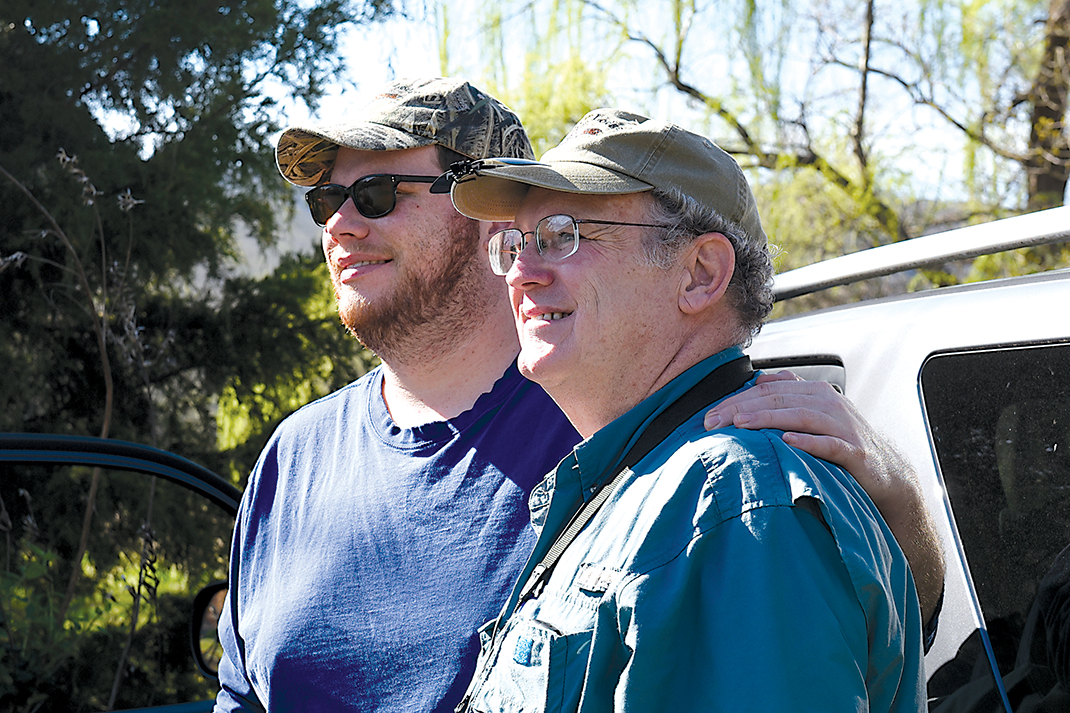Before I put my kayak in the water, Ted Caldwell warned, "Keep a good distance from the platforms. But if you get too close, they'll let you know."
It was early April and I had met up with Caldwell to talk osprey on the banks of the Tennessee River Gardens, a gated nature preserve owned by Caldwell's family at the base of Raccoon Mountain. Also known as the fish-hawk, the osprey is a large brown-and-white raptor common along the Tennessee River during spring and summer months. Its diet is almost exclusively live fish, and to watch one of these birds dive for its prey is spectacular. It is partly what attracted to me to paddling.
Osprey Fast Facts
The osprey is smaller than the bald eagle but longer than the red-tailed hawk.Length:21.3–22.8 inchesWingspan: 59.1–70.9 inchesClutch size: 1–4 eggsWinter migration: South America
But in the early 1970s, the osprey was nearly extinct in Tennessee. The species had been devastated for decades by DDT, a pesticide that was finally banned in 1972. In 1980, the Tennessee Valley Authority and the Tennessee Wildlife Resources Agency initiated an aggressive osprey hacking project to try to bring back the bird.
Hacking is a method of reintroduction where eggs are relocated to a manmade nest. After they hatch, they are fed by humans. The goal is to expand the bird's range.
From 1980 to 1988, TVA and TWRA successfully fledged 165 osprey chicks from 16 sites across Tennessee. In 1994, the osprey's statewide conservation status was dropped from endangered to threatened. Then, in 2000, it was dropped from the list altogether - thanks largely to the state's hacking project, but also to the number of nesting platforms erected by citizens like the Caldwells.
In 2013, Caldwell and his son Garnet Caldwell installed two platforms a few hundred yards off the Tennessee River Gardens' bank. Osprey have since nested there every season.
During my visit in April, the nesting pairs were incubating their eggs. Unlike many other bird species, an osprey lays each one of her eggs one to three days apart, meaning the chicks also hatch on different days, Caldwell told me.
"We consider them our grandchildren," Caldwell said of the chicks that have hatched from his platforms over the past four years. "We have 12," he said, grinning proudly.
Within a couple of weeks after my visit, the Caldwells expected to add a few new feathered family members. Though they will have to admire those chicks from afar.
As I began my paddle toward the platform, camera poised, osprey quickly filled the sky, whistling and chirping my warning.
ChattaBirds
In addition to his platforms near the Tennessee River Gardens, Caldwell and his son have also installed one near Maclellan Island in downtown Chattanooga. The platform is visible from the Market Street Bridge and the Hunter Museum of American Art. Learn about the Caldwells’ osprey efforts at chattabirds.org.

